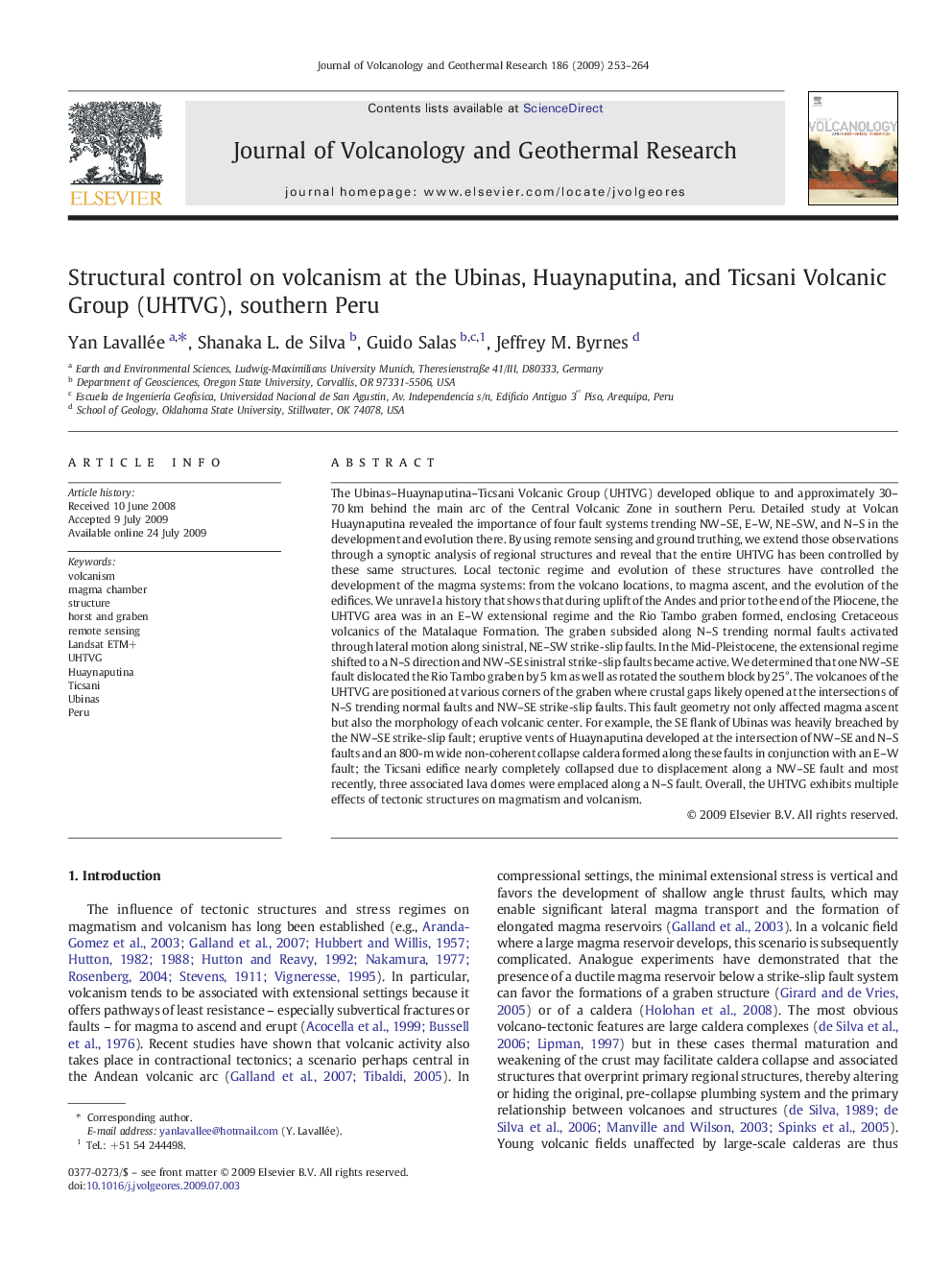| Article ID | Journal | Published Year | Pages | File Type |
|---|---|---|---|---|
| 4715216 | Journal of Volcanology and Geothermal Research | 2009 | 12 Pages |
The Ubinas–Huaynaputina–Ticsani Volcanic Group (UHTVG) developed oblique to and approximately 30–70 km behind the main arc of the Central Volcanic Zone in southern Peru. Detailed study at Volcan Huaynaputina revealed the importance of four fault systems trending NW–SE, E–W, NE–SW, and N–S in the development and evolution there. By using remote sensing and ground truthing, we extend those observations through a synoptic analysis of regional structures and reveal that the entire UHTVG has been controlled by these same structures. Local tectonic regime and evolution of these structures have controlled the development of the magma systems: from the volcano locations, to magma ascent, and the evolution of the edifices. We unravel a history that shows that during uplift of the Andes and prior to the end of the Pliocene, the UHTVG area was in an E–W extensional regime and the Rio Tambo graben formed, enclosing Cretaceous volcanics of the Matalaque Formation. The graben subsided along N–S trending normal faults activated through lateral motion along sinistral, NE–SW strike-slip faults. In the Mid-Pleistocene, the extensional regime shifted to a N–S direction and NW–SE sinistral strike-slip faults became active. We determined that one NW–SE fault dislocated the Rio Tambo graben by 5 km as well as rotated the southern block by 25°. The volcanoes of the UHTVG are positioned at various corners of the graben where crustal gaps likely opened at the intersections of N–S trending normal faults and NW–SE strike-slip faults. This fault geometry not only affected magma ascent but also the morphology of each volcanic center. For example, the SE flank of Ubinas was heavily breached by the NW–SE strike-slip fault; eruptive vents of Huaynaputina developed at the intersection of NW–SE and N–S faults and an 800-m wide non-coherent collapse caldera formed along these faults in conjunction with an E–W fault; the Ticsani edifice nearly completely collapsed due to displacement along a NW–SE fault and most recently, three associated lava domes were emplaced along a N–S fault. Overall, the UHTVG exhibits multiple effects of tectonic structures on magmatism and volcanism.
